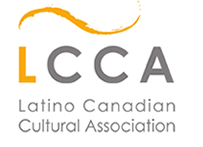Arts Policy and the Latino Canadian Arts Community
Abstract
This essay is a historical and analytical document, which examines the role of the Canada Council of the Arts and its attempts to manage diversity and promote multiculturalism. The Latino Canadian arts community will be examined in detail as a case study to discuss the benefits and disadvantages of having a multicultural agenda within government funding bodies for the arts. This essay brings forward historical initiatives taken by the Latino arts community to involve the councils and inform members of their community into active participation.
Introduction
Even though Canada is often applauded for its multicultural agenda and policy, some critics have questioned bureaucratic government attempts to manage diversity. The national multicultural agenda is reflected in cultural policies within government institutions such as the Canada Council for the Arts. According to the council's 2003/2004 Annual Report on the operations of the Canadian Multicultural Act, The definition of visible minority artists includes, but is not limited to, those of Asian, African, Latin American, Arab, and mixed heritage (Bansfield, pg. 1). Within the systematic model of funding for diversity, the complexity of multiculturalism and the individual communities that are part of this category are often undermined, categorizing all ethnic minorities under one single category of multiculturalism. It also creates a separation between non-white Ethnic Canadian counterparts existing in the category of the other to the English and French Canadians who are dominant within the Canadian cultural hierarchy. Canadian multicultural agenda recognizes the growing demands of a pluralistic society and the growth in diversity within the population thanks to immigration. However, it cannot adequately address the complexities of a plural artistic population and the wide range of concerns present within a variety of ethnic communities.
This essay will examine the history of the Toronto Latino Arts Community to show the impact of multicultural policy within one minority group. Within this category of visible minority, there is great diversity in cultural and ethnic makeup as well as within the range of artistic practice. Even though Latino artists most often share a common language, Spanish, they come from various parts of South America with distinct cultures. Until recently, the Latino arts community have had minimal opportunity to participate within the general Canadian artistic landscape and a very small number of Latino artists and organizations were receiving grants or being recognized for their contribution to Canadian art (Barreda, 2007). In October of 2004, Aconsejate! (Be Advised!), a meeting organized by the Latino arts community along with arts councils representatives in all three levels of government, took place. This created an opportunity to introduce this dynamic and fluid group of artists to the councils, to provide Latino artists with funding information, and to make recommendations to the councils based on the needs of this community (Barreda, 2007). This event signified a huge milestone within the Latino arts community, as it was the first meeting of its kind, which served as an information forum both for the community as well as for the representing councils. The results and outcome of this meeting will be closed analyzed in order to hypothesize possible implementation or changes that the Canada Council for the Arts as the Canadian cultural agency could undertake.
Even though government multicultural policy portrays ?ethnic harmony? as the norm especially in Canadian urban centres such as Toronto, it turns a blind eye to the uneven and disadvantageous socio-economic realities present within groups of visible minorities. (Croucher 319-347). There might be a higher level of social and public acceptance of multiculturalism in Canada in comparison to Europe or its neighbour to the south. However, Canada is not exactly a model of ethnic paradise. Canadian policy aims at creating one standard rule for a number of communities with distinct needs. Creating multicultural policy, which attempts to generalize and standardize a multicultural agenda seems ironic. For government agenda to become more effective, it must not simply try to create laws that ?manage? diversity. Rather, it should be committed to integrating these policies as part of the general Canadian cultural policy.
Government programs encouraging pluralism might be a step towards the right direction in pursuing diversity. However, there are limitations to systematic policies and procedures that attempt to enforce a standardization of multiculturalism that does not distinguish the very unique voices that are part of this diversity. If public funding for the arts must reflect the needs of a multi-ethnic public, how can government institutions incorporate a multicultural agenda that could effectively meet the needs of a diverse community of artists from different backgrounds? Can there be a greater exchange of ideas between government officials/policy makers and the public in order to increase funding opportunities for ?marginalized? communities? How can the Canada Council for the Arts transform its policies to understand cultural identities as shifting and fluid rather than static?
Sojin Chun
Toronto - March, 2009

